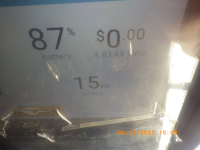BTW, I once heard that a KW at a charge station is not a true KW, it is calculated in a weird way. Is there any truth to that?
The nameplate spec of charging stations is not an exact number, if that's what you're getting at, and the limit is only indirectly related to power (kilowatts). Rather, there is a maximum current that the unit can put out (during CC mode) and a maximum voltage (during CV mode). So if you look at a faceplate on a charging station, you will typically see something like this:
So for OUTPUT POWER, it doesn't specify kW, but rather a voltage range and a max current.
Now you can't just multiply 920V * 500A to get 460kW. There will be a limit to how high a voltage can be supported while pumping out 500A, and similarly how much current will flow when in CV mode and holding 920V (or more realistically, 840 or so for 800V vehicles--the 920 likely includes a 10% or so design margin). To get that level of detail, you need to dig into the datasheets for the charging station which hopefully include a chart like this (source
https://evocharge.com/wp-content/uploads/2023/07/DCFC-Power-Cabinet-Spec-Sheet-0323.pdf):

This particular example is for a power cabinet (as opposed to a single station), but does illustrate that it can go clear up to 800V at its full current rating (250A per unit, which can be ganged together in single, double, or triple fashion), and then it tapers if you go above that, which effectively limits its power (for the single cabinet application) to 200kW). Other stations may "clip" earlier than that and start limiting the current at a lower voltage (like 600V for example). I had an example of such a curve, but unfortunately I am not finding it at the moment. It would result in a curve that looked like the pink and red lines I've overlaid here (I overlaid them on the "Triple" because it was easier to see):

But of course all this is a bit beyond the average driver, so for simplicity, they just call them 150kW stations or 350kW stations, or whatever.



